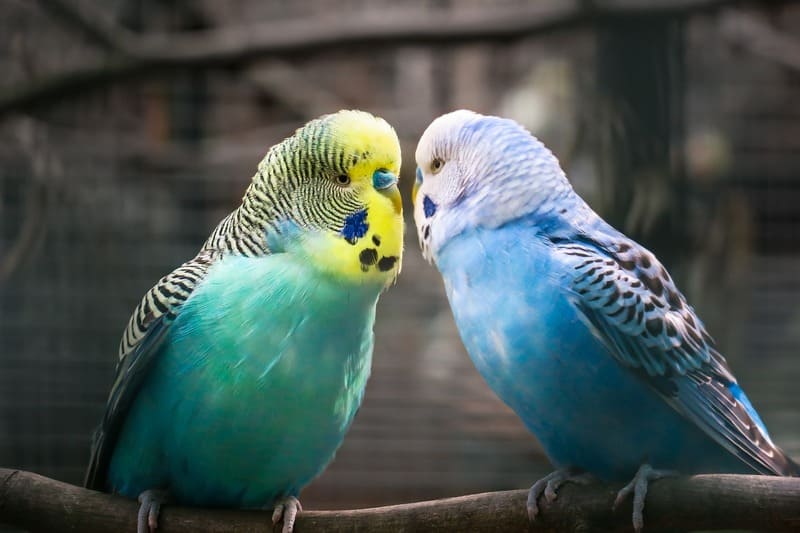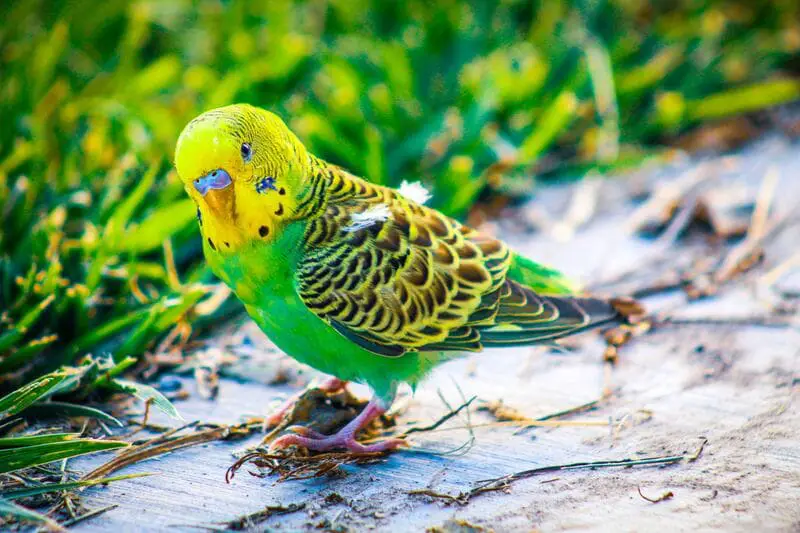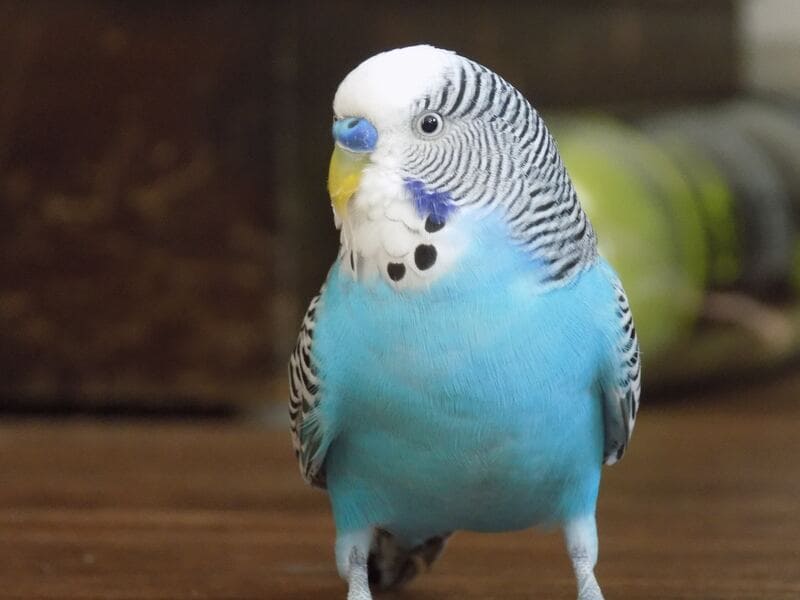Parakeets are small and colorful parrots that have captured the hearts of bird enthusiasts and pet owners around the world. These lively and charming birds are cherished for their engaging personalities and cheerful demeanor. When it comes to interacting with parakeets, many owners wonder whether their feathered friends enjoy being petted. Understanding a parakeet’s preferences for physical contact and social interaction is essential for building a strong bond and ensuring their well-being. In this comprehensive exploration, we will delve into the world of parakeet behavior, communication, and the intricacies of petting to answer the question, “Do parakeets like being petted?”

The Parakeet’s Social Nature
Before delving into the specifics of petting, it’s essential to grasp the social nature of parakeets. These birds are highly social and thrive on interaction with their human caregivers and fellow parakeets. Understanding their social behavior is crucial for providing them with a fulfilling and enriching environment.
Key aspects of parakeet social behavior include:
- Flock Mentality: In their natural habitat of Australia, parakeets live in large flocks. This group dynamic is ingrained in their social nature and affects their behavior as pets.
- Companionship: Parakeets seek companionship and are happiest when they have the company of their human caregivers or other parakeets. They enjoy talking, chirping, and playing with their companions.
- Communication: Parakeets are excellent communicators. They use vocalizations, body language, and various sounds to express their emotions, needs, and desires. Understanding their communication cues is essential for a strong bond.
- Playfulness: Parakeets are playful and enjoy various activities and toys that stimulate their minds and provide physical exercise.
- Mating Behavior: In a bonded pair, parakeets engage in courtship behaviors, such as feeding each other and mutual preening. This behavior reflects their close bond.
Parakeet Body Language
Parakeets communicate their feelings and preferences through body language, and understanding these cues is fundamental for positive interactions. While each parakeet may have individual expressions, some common body language signals include:
- Fluffed Feathers: Fluffing up their feathers can indicate relaxation and contentment. However, excessive fluffing may signal illness or discomfort.
- Tail Position: A raised tail often signifies curiosity or alertness, while a drooped tail can indicate a relaxed state.
- Beak Clicking: Soft beak clicking can be a sign of contentment or happiness. It is often heard when parakeets are comfortable and relaxed.
- Head Bobbing: Parakeets may bob their heads while singing or in response to music or interaction. It is an expression of enthusiasm and happiness.
- Wings Spread: Wings spread slightly away from the body can be a sign of excitement or anticipation. Parakeets may exhibit this behavior during play or while anticipating treats.
- Feather Ruffling: Ruffling their feathers can be a sign of relaxation or readiness for sleep.
- Preening: Preening is an essential part of a parakeet’s routine. They groom themselves and their companions as a sign of affection and bonding.
Do Parakeets Like Being Petted?
The answer to whether parakeets like being petted is not straightforward and varies from bird to bird. Parakeets have individual personalities and preferences, and their comfort with physical contact depends on various factors, including their socialization, past experiences, and the trust they have developed with their human caregivers. Here are some key considerations:
1. Trust and Socialization
The level of trust and socialization a parakeet has with its human caregivers plays a significant role in their comfort with being petted. Parakeets that have been raised in a loving and nurturing environment and have positive interactions with humans from a young age are more likely to be receptive to petting. They learn to associate human touch with comfort and security.
2. Individual Personality
Parakeets, like humans, have individual personalities. Some parakeets are naturally more outgoing, curious, and accepting of physical contact, while others may be more reserved or skittish. Understanding your parakeet’s unique personality will help you gauge their comfort with being petted.
3. Body Language Cues
Observing your parakeet’s body language is essential when determining whether they enjoy being petted. If they display signs of relaxation, such as fluffed feathers, soft beak clicking, and a calm demeanor when you approach them, it may indicate that they are receptive to petting.
4. Interaction and Bonding
The quality and history of your interactions with your parakeet play a vital role in their comfort with petting. Positive and respectful interactions, such as offering treats, talking gently, and spending time together, build trust and strengthen your bond. As the bond deepens, parakeets are more likely to enjoy and welcome petting.
5. Location and Timing
The environment in which you attempt to pet your parakeet can impact their comfort level. Parakeets may feel more at ease when they are in their cage, on their perch, or in familiar surroundings. Additionally, the timing of your attempts matters. Parakeets may be more receptive to petting during their active hours rather than when they are resting or sleepy.
6. Preference for Touch
Parakeets have preferences for the type of touch they enjoy. Some may be comfortable with gentle head scratches, while others may prefer being petted on their cheeks, neck, or back. Pay attention to your parakeet’s reactions to determine their preferred areas for petting.
7. Consistency
Consistency in your approach and interactions is vital. If your parakeet enjoys being petted, ensure that you provide consistent and gentle petting. Sudden or erratic movements can startle them and may lead to discomfort.
8. Body Language Feedback
Pay close attention to your parakeet’s body language during petting. If they become tense, show signs of discomfort (such as raised feathers or beak clicking), or try to move away, it’s crucial to respect their boundaries and stop petting.
9. Gradual Introduction
If your parakeet is not accustomed to being petted, introduce the idea gradually. Start with brief and gentle touches and observe their response. Over time, you can increase the duration of petting if they seem comfortable.
10. Verbal Communication
Engage in verbal communication with your parakeet while petting. Speak in soothing and reassuring tones to provide comfort and let them know that they are safe and loved.

Potential Reasons Parakeets Enjoy Being Petted
For parakeets that do enjoy being petted, there are several potential reasons that make this physical interaction a positive and rewarding experience for them:
1. Bonding and Affection
Parakeets are highly social birds that form strong bonds with their human caregivers. Petting provides a means of physical closeness and strengthens the bond of affection between the bird and their owner. It serves as a way to express love and care.
2. Mutual Grooming
In the wild, parakeets engage in mutual grooming as a sign of affection and social bonding. When you gently stroke or pet your parakeet, they may perceive it as a form of mutual grooming, reinforcing their sense of attachment to you.
3. Comfort and Security
Physical contact can offer comfort and security to parakeets. The touch of a caring hand can provide a sense of safety and relaxation. Many parakeets enjoy being petted on their head or neck, as these areas are particularly sensitive.
4. Positive Reinforcement
Parakeets are quick learners and respond to positive reinforcement. When they realize that petting is associated with praise, treats, and affection, they are more likely to enjoy and seek out this form of interaction.
5. Sensory Stimulation
Petting offers sensory stimulation to parakeets. It can be a pleasurable experience for them, especially if they like the sensation of being touched or gently stroked.
6. Physical Well-Being
Regular petting sessions can contribute to a parakeet’s physical well-being by reducing stress and providing mental and emotional enrichment. Happy and relaxed parakeets are more likely to stay healthy and content.
7. Social Interaction
Petting provides an opportunity for social interaction and engagement. It is a way for you to communicate with your parakeet and express your love and care. Parakeets are social birds that appreciate interaction with their human companions.
Potential Reasons Parakeets May Not Like Being Petted
While many parakeets enjoy petting, there are also reasons why some parakeets may not prefer this form of physical contact:
1. Past Experiences
Parakeets that have had negative or traumatic experiences related to physical contact may be hesitant or fearful of petting. These experiences could include mishandling, accidents, or aggressive interactions.
2. Fear or Shyness
Parakeets that are naturally shy or fearful may be uncomfortable with direct physical contact. They may need more time and patience to build trust and become receptive to petting.
3. Individual Personality
Each parakeet has a unique personality, and some may simply prefer less physical contact than others. They may have individual preferences for social interaction and bonding.
4. Health Issues
Parakeets that are unwell or in pain may not enjoy petting, as it can exacerbate discomfort. It’s essential to monitor their health and well-being and consult with an avian veterinarian if you suspect any health issues.
5. Mating Behavior
During their breeding season, parakeets may exhibit territorial and protective behaviors, which can make them less tolerant of petting. This is a natural part of their reproductive cycle.
6. Stress and Overstimulation
Parakeets can become stressed or overstimulated by excessive physical contact. It’s important to be attuned to their body language and behavior to prevent such situations.

Tips for Petting Parakeets
For parakeet owners who wish to pet and interact with their feathered companions, here are some tips to ensure a positive and enjoyable experience for both the parakeet and the owner:
- Respect Individual Preferences: Recognize that not all parakeets enjoy petting. Respect your parakeet’s preferences and boundaries. If they show signs of discomfort or resistance, do not force the interaction.
- Build Trust Gradually: If your parakeet is not accustomed to petting, build trust gradually through positive interactions, such as offering treats and spending time together. Let the bird dictate the pace of the bonding process.
- Choose the Right Time: Pet your parakeet during their active hours when they are alert and relaxed. Avoid disturbing them when they are sleeping or resting.
- Observe Body Language: Pay close attention to your parakeet’s body language and responses. If they display signs of enjoyment and relaxation, continue petting. If they show signs of discomfort, stop immediately.
- Preferred Areas: Identify your parakeet’s preferred areas for petting. Some may enjoy head or neck scratches, while others may prefer back or cheek strokes. Be attuned to their preferences.
- Positive Reinforcement: Use petting as an opportunity for positive reinforcement. Offer praise and treats to create a positive association with the interaction.
- Gentle Touch: Always use a gentle and slow touch when petting your parakeet. Avoid sudden movements or rough handling.
- Use Verbal Cues: Engage in verbal communication with your parakeet while petting. Speak in soothing tones to provide comfort and reassurance.
- Limit Duration: Keep petting sessions relatively short, especially if your parakeet is not accustomed to it. Gradually increase the duration as they become more comfortable.
- Maintain a Consistent Routine: Parakeets thrive on routine. Establish a consistent daily routine that includes petting, feeding, and playtime.
- Provide Enrichment: Offer a variety of toys and activities to keep your parakeet mentally and physically stimulated. Mental enrichment is as important as physical contact.
- Monitor Health: Regularly monitor your parakeet’s health and well-being. If you notice any changes in behavior or physical condition, consult with an avian veterinarian.
Conclusion
In conclusion, the question of whether parakeets enjoy being petted is a nuanced one. While individual preferences can vary, it’s essential to approach interactions with these charming birds with a deep understanding of their social behavior and physical characteristics.
Parakeets are highly intelligent and social birds that form strong bonds with their human caregivers. They thrive on social interaction, and many enjoy spending time with their owners. While some parakeets may tolerate or even enjoy being gently petted or scratched, others may not be as receptive to physical touch. Their comfort with handling can be influenced by their past experiences, their age, and their individual personalities.
When attempting to pet or handle your parakeet, it’s crucial to be patient and respectful of their boundaries. Pay close attention to their body language, as signs of stress or discomfort should be heeded. Always approach them with gentleness and allow them to initiate or decline physical contact. Building trust and a strong bond with your parakeet through positive interactions, such as talking to them, offering treats, and providing a stimulating environment, can be more rewarding and enjoyable for both you and your feathered companion.
Ultimately, the level of comfort and enjoyment your parakeet derives from being petted may vary, but what truly matters is the quality of the relationship and the happiness and well-being of your cherished avian friend.
